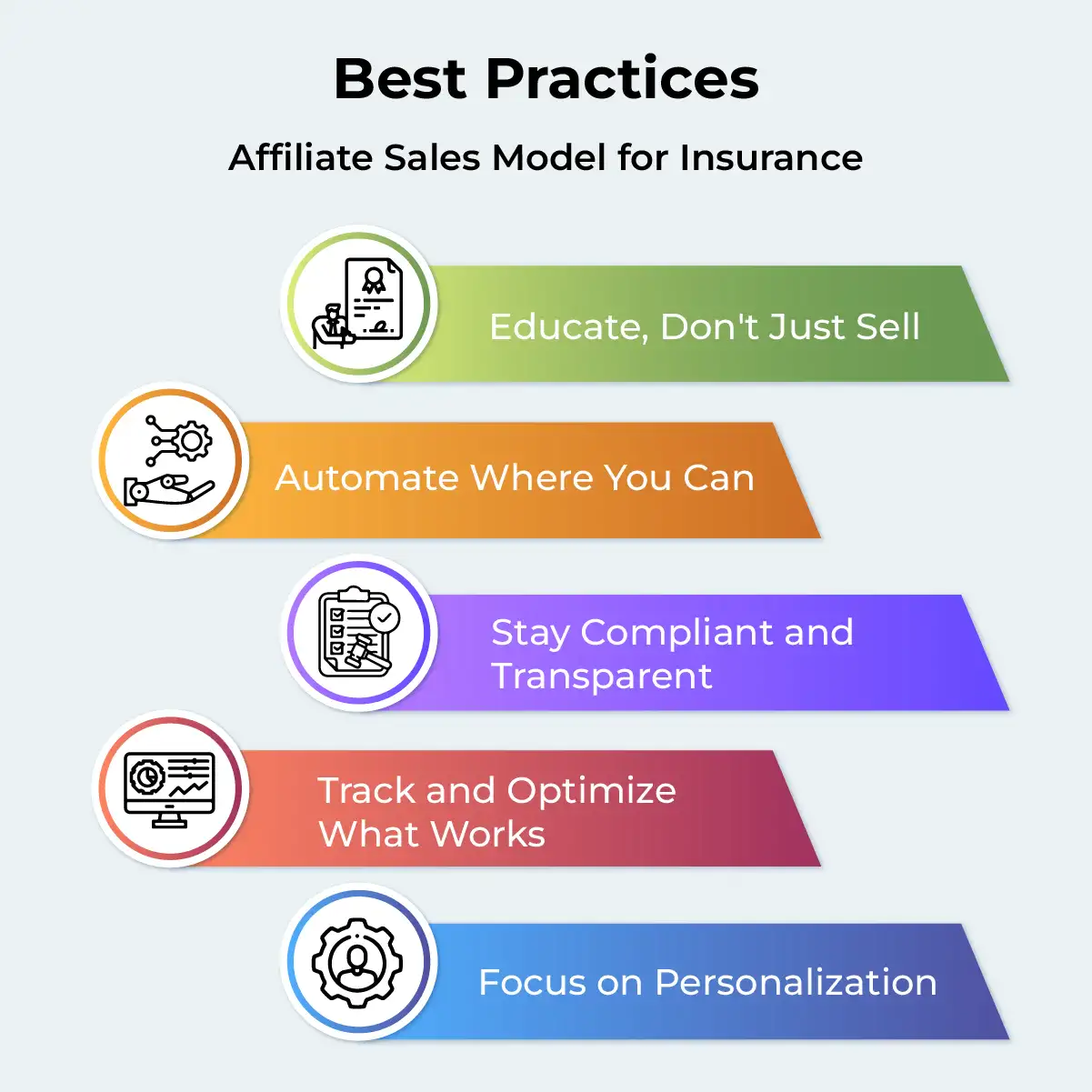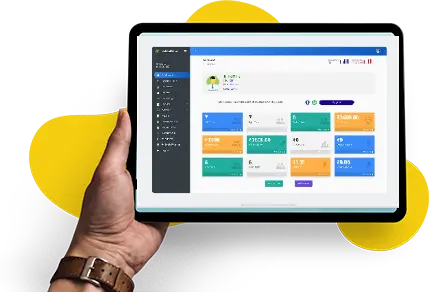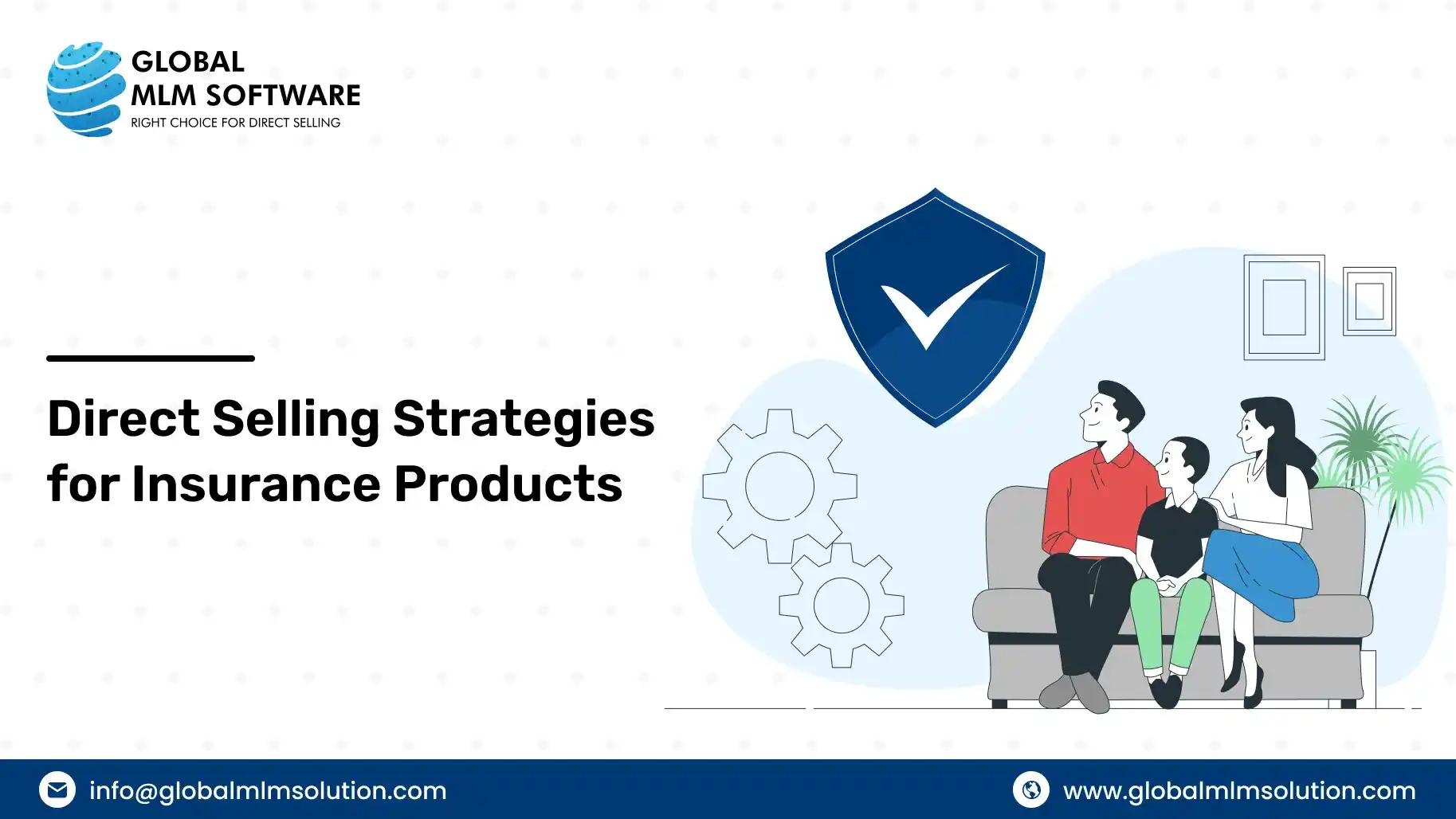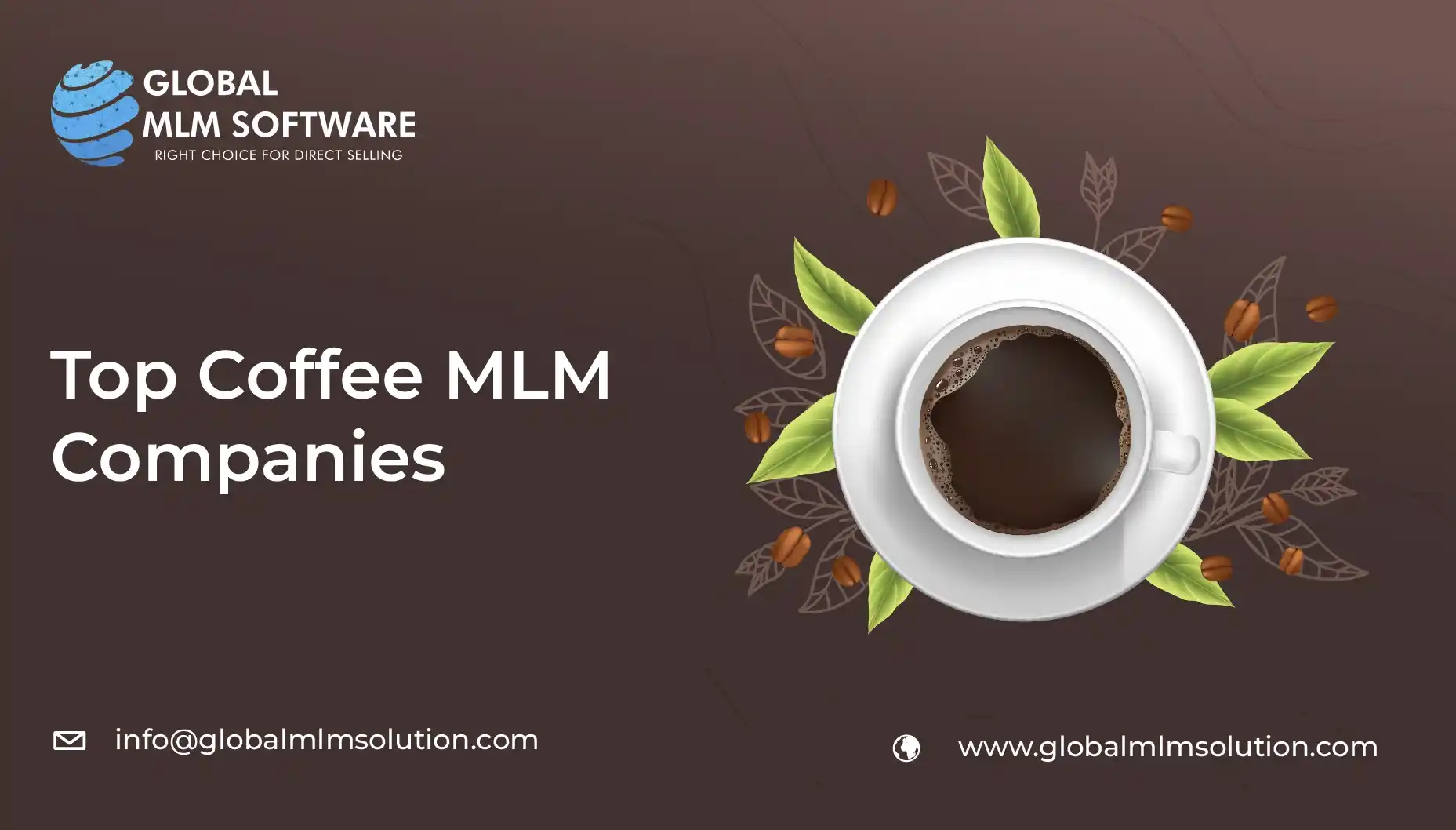Affiliate marketing is one of the most popular methods for individuals to generate income online. While this kind of marketing is often associated with e-commerce products, it's particularly profitable for the insurance industry as well.
As per industry experts like Covered, affiliate marketing can enhance customer experience by connecting customers with relevant insurance options at appropriate times.
In this article, we will talk about how to sell insurance products using the affiliate sales model in MLM.
This Article Contains:
Understanding the Insurance Affiliate Sales Model
The insurance affiliate sales model is a performance-based marketing approach in MLM. In this model, individuals or businesses promote insurance products—such as health, life, or home insurance—on behalf of an insurance provider or platform.
Using unique referral links or codes, affiliates drive potential customers to apply for or even purchase insurance policies. They earn commissions or a reward when a specific course of action is completed, this even includes a lead submission or a purchase.
Selling Insurance Through Affiliate Marketing: A Step-by-Step Guide
To sell your products as an affiliate, you need to find or create an affiliate program, promote your products through various channels, and track the performance of your affiliate links. Let’s talk about this in detail.

Step 1: Select the Right Insurance Products to Promote
Before you start promoting your insurance products, it's crucial to know that not all insurance products perform equally well in the affiliate space.
Did you know? While awareness about life insurance is fairly high in the U.S., only 54% of Americans actually have a life insurance policy. Plus, many citizens also admit they don’t fully understand how life insurance benefits them.
One major reason behind this gap isn't just affordability or trust—it's ineffective messaging. Many affiliates promote all kinds of insurance products without aligning them with what people actually need or understand. This leads to
Confusion
Low conversion rates
Wasted effort
To sell insurance products effectively, start by understanding your audience—whether they're young professionals, families, or retirees, their needs will vary. Focus on promoting simple, easy-to-understand policies like term life, auto, or dental insurance, which are easier to explain and convert better.
Step 2: Partner with Insurance Providers or Affiliate Networks
On-demand insurance is becoming more popular as people look for flexible and personalized options. Today's customers want quick, digital experiences—and that's where affiliate marketers can really help insurance brands. Hosting live online events or webinars is a great way to connect people with the right insurance products at the right time.
To get started, you'll need to partner with trusted insurance brands or join affiliate networks that offer insurance products. These partners usually give you everything you need—like referral links, marketing materials, and tools to track your earnings. Some even provide training to help you sell better. Lastly, it is suggested to learn commission management in MLM, before partnering with an insurance provider.
Step 3: Set up your Cost Model
When it comes to selling insurance through affiliate marketing, one of the most important decisions you'll make is choosing the right cost model—also known as a commission scheme. This determines how and when you get paid for the referrals you generate.
| Aspect | Cost Per Sale (CPS) | Cost Per Lead (CPL) | Revenue Share (RevShare) |
|---|---|---|---|
| When You get paid | After a customer buys a policy | When a user submits a valid lead form | After sale, then recurring payouts as long as the customer stays active |
| Payout Type | One-time, higher commission per sale | One-time, lower commission per lead | Ongoing % of revenue generated from referred customers |
| Best For | Companies seeking high-intent, purchase-ready customers | Companies aiming to fill the top of the funnel with prospects | Companies looking for long-term partnerships and recurring business |
Step 4: Create Value-Driven Content
If you want to succeed with affiliate marketing, you need to go beyond just product promotions. Today's customers don't respond well to pushy sales, but they want helpful, informative content that guides them in making the right choices.
That's why creating value-driven content is so important. It helps to educate potential buyers, builds trust, and makes the affiliate's job easier. When people find your content helpful, they're more likely to take action—like requesting a quote or buying a policy.
Here are some great types of content you can create:
Blog articles
Explainer videos
Comparison guides
Social media tips
Email series
Webinars or live sessions
Creating this kind of content focused on Social media strategy for MLM companies adds real value for your audience. It makes affiliate promotions feel helpful instead of salesy, which leads to better trust and more conversions.
Step 5: Drive and Monitor Targeted Traffic
Once your affiliate partnerships are in place, the next step is ensuring that the right audience is actually seeing your insurance products. This is where technology, targeted distribution, and automation come into play.
Encourage affiliates to use platforms like Facebook, LinkedIn, Instagram, and YouTube to create educational or comparative content around your insurance offerings. These platforms allow for highly targeted ad campaigns, where users can be segmented by age, location, income level, and even life events (like recently getting married or having children).
For B2B-focused insurance products, LinkedIn Ads and Google Display campaigns are effective tools to drive traffic from professional audiences to customized landing pages. These platforms allow you to target key decision-makers in relevant industries, ensuring that your ads reach the right audience. In addition to this, you should have a clear idea about top direct sales KPIs for direct selling leaders and tweak your strategy accordingly.
Case Studies or Examples of Successful MLM Insurance Affiliate Programs
As an MLM business owner, studying affiliate sales case studies offers valuable insight into proven commission-based models. Plus, it helps you identify scalable products and strategies that align with your own network-driven approach. Let’s discuss some of the successful MLM programs.
Case Study 1: Lemonade – A Fast-Selling Product for MLM Portfolios
Lemonade has already established itself as a top-performing insurance affiliate program. With over 1.5 million customers and a new policy sold every 60 seconds, it has powered countless affiliate earnings through its slick, AI-driven platform. Marketers have seen solid results from its mobile-first quoting, fast onboarding, and commissions of up to $15 per lead.
For MLM business owners seeking new revenue streams, Lemonade remains a smart bet. Its ease of integration, rapid customer conversion, and low-friction model make it an excellent plug-and-play option for MLM teams ready to scale insurance sales.
| Feature | Details |
|---|---|
| Customers | 1.5 million+ |
| Policy Sold Every | 60 seconds |
| Commission per Lead | Up to $15 |
| Ideal for | Scalable MLM models |
Case Study 2: WorldNomadPro – Travel Insurance for MLMs with Global Reach
WorldNomadPro’s affiliate program, offered via CJ Affiliate, is a strategic fit for MLM networks in the travel, lifestyle, or remote workspace. With $0.80 per quote generated and a 60-day cookie window, MLM businesses can create evergreen funnels that earn even when leads convert later. Its seamless digital quoting tool works well in content-driven or email-based MLM campaigns, allowing teams to boost passive earnings while offering value to frequent travelers. To streamline and scale affiliate-driven insurance programs, MLM businesses can explore affiliate MLM software designed for performance, tracking, and multi-tier commissions.
| Feature | Details |
|---|---|
| Cookie Duration | 60 days |
| Commission per Quote | $0.80 |
| Ideal Use for MLMs | Travel, Remote Work |
| Funnel Type | Content & Email |
Best Practices: Affiliate Sales Model for Insurance
Selling insurance through insurance affiliate programs is powerful, but success depends on more than just sharing links. As an MLM business owner, you already understand relationship-building. These best practices will help you turn that trust into long-term commission growth.

Educate, Don't Just Sell
People are skeptical of insurance — they need guidance more than persuasion. Use paid tenancy blogs, videos, and FAQs to break down complex terms and show real-world scenarios. Trust grows when people feel informed, not pushed.
Automate Where You Can
Leverage tools like email drip campaigns, lead capture forms, and scheduling tools for social posts. Automation helps you scale your business by keeping leads organized and even allowing relationship-building — and to truly boost productivity, you can utilize some of the top network marketing automation tools.
Stay Compliant and Transparent
Insurance is regulated, and transparency builds long-term trust. Always disclose your affiliate relationship, avoid exaggerated claims, and follow the program's approved language and guidelines.
Track and Optimize What Works
Use tools like Google Analytics, Bitly, or your affiliate dashboard to see which links, content, and platforms convert best. This helps you double down on what works. Plus, it’s also suggested to monitor the performance of your home page.
Focus on Personalization
A personalized selling strategy works especially well in the insurance sector. This is because 85% of people buy insurance through an agent whom they trust or are introduced by family and friends. Personalize your approach — whether it's a tailored email sequence for new leads or a blog post aimed at a specific life stage (like "Best Health Insurance for New Parents"). Personal touches drive higher engagement and conversion.
FAQs
1. Can I sell insurance through affiliate marketing without a license?
Yes, in most cases. If you're only promoting insurance products and referring leads to licensed providers, you usually don’t need a license. But it’s always good to check your local laws or insurance affiliate program rules to be sure.
2. What types of content work best to promote insurance as an affiliate?
Content that educates and answers questions works best. Try blog posts, comparison charts, explainer videos, or checklists like “What to Know Before Buying Life Insurance.”
3. How long does it take to start earning commissions?
It depends on your niche, traffic, and the effort you put in. Some affiliates see results in a few weeks, while others may take a few months. Consistency with content and promotion is key.
4. Can I mix insurance affiliate offers with other products in my MLM business?
Absolutely! In fact, if done right, it adds more value. Just make sure your messaging is clear and the offers are relevant to your audience’s needs.
5. How can I integrate insurance affiliate programs into my MLM team's sales strategy?
You can align insurance affiliate offers with your team’s existing pitch by positioning them as value-adds or complementary products. Provide ready-made content, training, and marketing assets to help your downline promote these offers effectively while maintaining compliance and consistency across your network.
Disclaimer: Global MLM Software does not endorse any companies or products mentioned in this article. The content is derived from publicly available resources and does not favor any specific organizations, individuals or products.







Conclusion
Selling insurance through affiliate marketing can be a great way for MLM business owners to earn a steady income. In this article, we covered how to choose the right insurance products, work with affiliate networks, create helpful content, and pick the best commission model for your style.
To grow faster, personalization and automation really help. When you give people content that feels made just for them—and use tools to save time—you’ll see better results without extra effort.
To make a big difference in the affiliate sales, especially in insurance products, choosing Global MLM Software can be very helpful. It helps you manage your leads, track commissions, and automate your MLM business operations—so you can focus more on building relationships and growing your income.